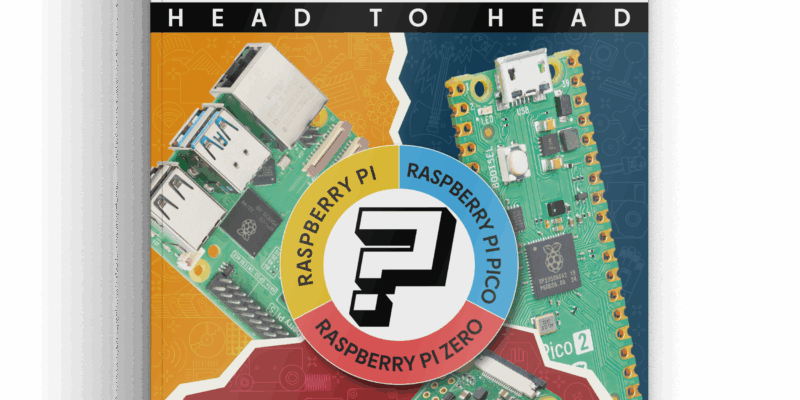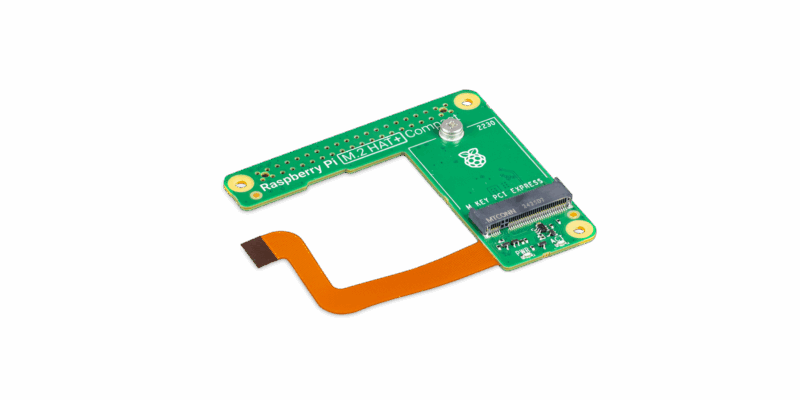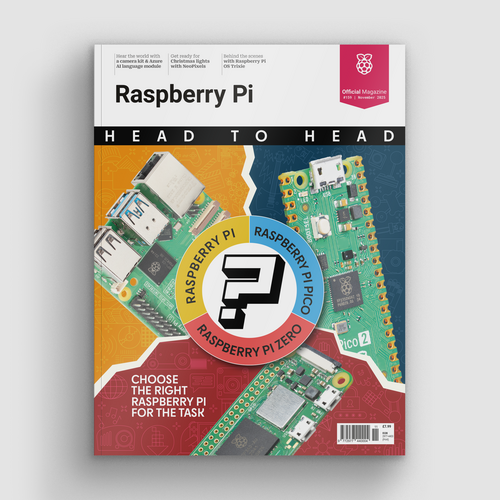Raspberry Pi Cluster Briefcase
By Rosie Hattersley. Posted

Having an inexpensive (but mighty!) Linux-powered computer to hand” has always been immensely useful to Sean M Tracey, who fell for Raspberry Pi’s abilities almost as soon as it debuted. Already a proficient IoT tinkerer, he quickly incorporated Raspberry Pi into cloud and edge computing projects. These days, he specialises in showcasing how smoothly such products can run. Attracting customers via trade events also involves making a splash, which is how the Raspberry Pi Cluster Briefcase came about…
Advertisement
Head to head: Raspberry Pi + Raspberry Pi Zero + Raspberry Pi Pico.
Smells fishy
Bacalhau is the name of a Portuguese saltfish, but it’s also the name of the IoT (Internet of Things) software created by Expanso, where Sean M Tracey works as head of developer relations. “We wanted to attend TechCrunch Disrupt 2024 with something more interesting than the regular kind of merchandise and posters exhibitors tend to bring with them,” he says, but the product the team wanted to showcase is designed to provide access to files and functions from a different location than the exhibition stand. “Bacalhau makes it really easy to set up distributed computing networks, but demoing something that, by design, is usually somewhere else, can be a bit tricky.”

Turning things on their head, the team decided “to build a distributed compute cluster into a briefcase that we can take with us wherever we go”.
Presidential approach
The topsy-turvy approach to showing off a means of secure remote access has more than a little in common with the so-called ‘nuclear football’ briefcase that US presidents have been known to carry with them as a mobile command centre for reacting to a nuclear strike. “It’s terrifying that such a thing exists but, world-ending capabilities aside, it’s a cool, impressive piece of technology and perfect for taking a whole bunch of compute capacity with you to various conferences and venues,” notes Sean.

In fact, the resemblance meant the team soon dubbed the project ‘the football’. Raspberry Pi was “a natural fit” given its dainty dimensions, easily able to fit discreetly inside a briefcase. “They are small enough that fitting a couple into a briefcase isn’t too much work, powerful enough to run meaningful workloads on them for our demos (we love running EdgeML models!), and efficient enough that we didn’t need a huge power brick to get the whole thing running,” says Sean. Another serious consideration was how quickly the Expanso team could put together their workable demo. “We built this thing within 36 hours, with a transatlantic flight in the middle!”
Sean dropped by the Raspberry Pi store in Cambridge before setting off to San Francisco. He needed to fit four Raspberry Pi 5s inside the Cluster Briefcase. One would act as the orchestrator node and be used to manage access and distribute jobs. The other three Raspberry Pi 5s were designated as compute nodes where workloads could be executed.

Developers, assemble!
Constructing the top-secret briefcase largely took place in Sean’s hotel room opposite the TechCrunch developer conference where Expanso was due to unveil it. Trundling a trolley full of hardware and wood for the build raised a few eyebrows at reception.
Sean has “learned the hard way that if you’re planning to glue something down – especially a computer – you should check that it works as expected first”, so he set about testing and configuring the Raspberry Pi 5s with Bacalhau before fitting everything into the hardware enclosure and briefcase.

Once everything was assembled and fully tested, it took a mere 20 minutes to get all four Raspberry Pi 5s working together inside the briefcase as a Bacalhau cluster. Being able to set a known hostname for the orchestrator node using Raspberry Pi Imager helped with the ease of setup. Sean also credits the “adaptive and reliable” NATS high-performance open-source messaging system Expanso “built right into the heart of Bacalhau”.
Subscribe to Raspberry Pi Official Magazine
Save up to 37% off the cover price and get a FREE Raspberry Pi Pico 2 W with a subscription to Raspberry Pi Official Magazine.
More articles

Teka-Sketch
This all-new e-ink-based Etch-a-Sketch can play Pong, and it also has an undo button
Read more →

Raspberry Pi vs Raspberry Pi Zero 2 vs Raspberry Pi Pico in Raspberry Pi Official Magazine 159
Without an operating system, any computer – including your Raspberry Pi – is just a dumb lump of sand. Put Raspberry Pi OS on it however, and you’ve got yourself a working system that can handle games, web browsers, emails, programming and everything else we bang on about here all day every day. The latest […]
Read more →

Win one of ten M.2 HAT+ Compact
The ability to connect NVME SSD drives to Raspberry Pi 5 is very cool, although it does slightly limit the cases you can use. With the M.2 HAT+ Compact, you can even fit an SSD-powered Raspberry Pi into the official case – and we have ten to give away below. Win one of ten M.2 […]
Read more →
Sign up to the newsletter
Get every issue delivered directly to your inbox and keep up to date with the latest news, offers, events, and more.

